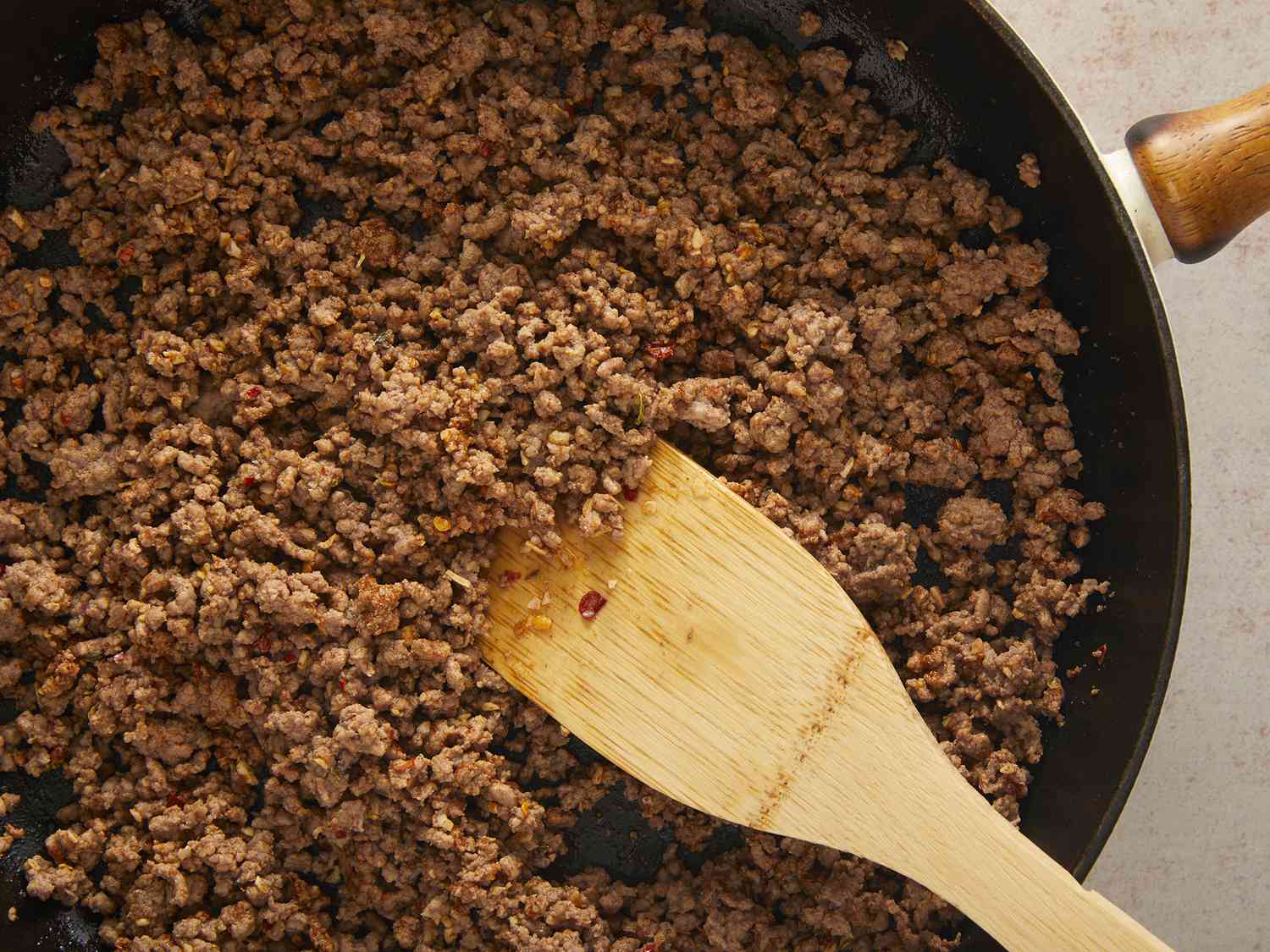
Is beef as bad as they say? Let’s look at the science
We have all heard the negative statements about beef, such as “limit your beef consumption,” and “red meat is bad for your health.” In fact, in the last 5 years, there has been an increase in negative talk about beef and meat in general, but is beef the danger it is being portrayed as in media sources? Let’s look at the scientific facts.
Many of the studies on health issues associated with red meat (which includes beef) were observational studies. Observational studies can be difficult to ascertain true cause and effect data because of all the variables present in any observational situation. For example, many of the subjects studied who had increased risk or known health issues were sedentary, so they were getting little to no exercise while consuming read meat. It is a very well-known scientific fact that a lack of exercise plays a monumental role in the decline of health. Also, there is a big difference between consuming fatty fast-food burgers and consuming lean cuts of beef, and many studies did not indicate whether red meat consumption was lean meat, fast food, or deep fried.
If we are going to follow observational studies, then many of us who train with intensity do consume lean beef, and our blood lipid profiles show no sign of health-related issues. However, if your physician has recommended that you avoid red meat, do so, but the majority of healthy individuals who are active and eating a healthy diet will find that adding some lean beef to their diet will not negatively impact their health.
The Busy Diet recommends adding some lean beef because it is a rich protein source. Beef is a very important protein source that is easy to prepare and provides a big nutritional punch. Below is a very basic nutritional profile (does not include all of the nutrients) of 4 ounces of grass-fed beef. The best beef you can find is grass-fed due to the nutritional value of the meat found in the grass-fed product, and if you are looking for an even leaner cut, look for beef that is 10% fat. If, however, you want a little extra flavor and calories, 20% fat will meet your needs.
Grass Fed Beef Nutritional Profile
4 oz (114g grams)
Grass Fed Ground Beef
Amount Per Serving
Calories 157
Total Fat 7g grams 9% Daily Value
Saturated Fat 3.1g grams 16% Daily Value
Trans Fat 0.3g grams
Polyunsaturated Fat 0.4g grams
Monounsaturated Fat 2.7g grams
Cholesterol 56mg milligrams 19% Daily Value
Sodium 72mg milligrams 3% Daily Value
Total Carbohydrates 0g grams 0% Daily Value
Dietary Fiber 0g grams 0% Daily Value
Sugars 0g grams
Protein 24g grams
Calcium 4.6mg milligrams 0% Daily Value
Iron 2.6mg milligrams 14% Daily Value
Protein
You can see from the nutritional profile that beef contains a lot of protein at a low-calorie total. The above example contains 24 grams of protein in only 157 calories, which means you do not have to consume a lot of calories to get some very good protein.
The protein in beef is a very high-quality protein with a great Biological Value. This means that it absorbs well, and the protein that is absorbed is used efficiently by the tissues of the body. This is very important for individuals who train hard because quality proteins aid in muscle recovery and growth.
Beef protein has a Biological Value of 80 (Nitrogen used for tissue formation divided by nitrogen absorbed from food x 100) which gives beef protein one of the top Biological Values (behind egg and whey protein). Better protein quality means a little beef can go a long way in your diet.
Fat
The fat in beef is primarily composed of saturated and monounsaturated fats, in nearly equal amounts. Fat is often seen as the enemy in our diet, but it is only bad when consumed in excess (like any other energy nutrient). Fat is an excellent energy source, with 9 calories per gram, as opposed to only 4 calories per gram of carbohydrate.
Fat also contains vital nutrients for our health. For example, grass fed beef contains higher quantities of Omega-3 fatty acids, which produce an anti-inflammatory reaction in the body, and counteracts the Omega-6 fatty acids which can cause inflammation in the body. The Omega-6 fatty acids are often found in higher quantities in fast food and other lower quality beef products.
Iron
A four-ounce piece of beef will provide roughly 20% of the daily recommended Iron intake. Iron is used to make hemoglobin in the blood which is responsible for absorbing oxygen from our lungs and transporting it throughout our body to supply all the tissues. Iron also plays an important role in immune system function, cognitive function, metabolic processes, hormone production, and skin, nail, and hair health.
Vitamins and Minerals and other Micronutrients
Beef contains a rich supply of B vitamins which play a role in multiple functions in the body. Some of the functions of B vitamins include nervous system support, metabolic support (including fat metabolism), enzyme production, DNA and RNA regulation, and red blood cell production. Without iron and the B vitamins, you would be unable to function, let alone train hard. Both iron and B vitamins also support recovery from training sessions as well as muscle growth and adaptation.
Beef contains a very large percentage of the daily Zinc requirements, as a 4-ounce serving of beef will contain nearly 80% of the Zinc requirements. Zinc is a major contributor to immune system function and protein synthesis. Not only does Zinc help with wound healing, but it will help you fight off bacteria and viruses and help your muscle recovery between workouts. Zinc will also assist in protein synthesis (addition of protein for muscle hypertrophy), and it plays a role in DNA regulation.
If you want to protect your thyroid function, Selenium is a nutrient found in beef that will improve and protect thyroid function. The thyroid is responsible for the body’s metabolic rate, so maintaining a healthy thyroid will help maintain a healthy metabolic rate. A normal, four ounce serving of beef will contain about 55% of our daily Selenium needs. This nutrient is not only good for your thyroid, but it is also very important for your immune system function.
Beef also contains a compound called Choline which is important for proper muscle function, as well as aiding in memory and mood. However, Choline is more well known for controlling fat and cholesterol build-up and supporting the body’s ability to burn fat. Choline is very important for maintaining metabolic rate and it plays a role in maintaining liver health and function.
Once again, the Busy Diet contains foods that are loaded with nutrients that support a busy lifestyle with training. The food in the Busy Diet is clean and, with training, will provide you with the physique you are trying to achieve. Beef is a rich source of high-quality protein and nutrients that fit the superfood profile of the Busy Diet. Try the Busy Diet and notice the difference.
By Don Laubenthal, MS, CSCS
Meet the Brofessor
Professor and Coordinator
Sport and Exercise Studies – Exercise Science
Columbus State Community College
[email protected]
@Don Laubenthal
10 Replies to “Muscle Building Beef”
Leave a Reply
You must be logged in to post a comment.












LandCrusher31 (Adam)
Speaking of beef has anyone here ever purchased a whole or half cow to be butchered? I just started the process of looking into it and grass fed cows can be purchased, butchered and shipped.
jfradkin33
I’ve never done it but have looked into it several times. I don’t have the freezer space, that’s the only reason I never did. You can look into local farms that do it as well and can pick up right from the farm. Depending on who you end up with, many offer several order sizes (whole, half, quarter, eighth, etc.), each with customizable cuts, add-one, etc. good luck!
Wade Mootrey
It’s usually a great deal for better quality meat. We didn’t do it this year because the place I get it from just raised their prices to like $10/pound (was $6).
bigbeck9
I’ve done it for there years now. it’s great
DanS
Yeah I have friends that so do it, I just don’t have the space. It’s more expensive if you just compare like ground beef prices but less expensive for like ribeyes. So it comes out level and better quality if that makes sense
gmailhot09
I raise chickens, turkeys and pigs. And purchase a butchered cow with a couple friends every year. I like knowing where my meat comes from. But it is more expensive haha
LandCrusher31 (Adam)
I don’t mind it being more expensive. I was looking locally and it’s breaks down to about $10 a lb which I’m fine for grass fed
jfradkin33
That’s awesome!
gmailhot09
Adam it’s worth every penny. I normally go in with a couple friends and get 1/4 of a cow. It’s still a hell of a lot of meat. Coupled with my own animals I very rarely buy meat at the store. So I just tell myself I’m saving in groceries lol.
joshwang
Love this! Just picked up some brisket (half price) for Father’s Day next week. Can’t wait!